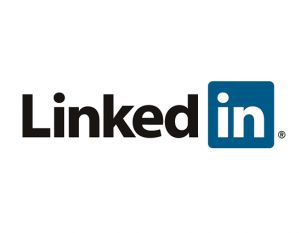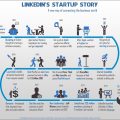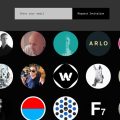LinkedIn History – How Reid Hoffman Started The Worlds Top Professional Social Site
LinkedIn’s Startup Story
The story of the world’s biggest business social site LinkedIn – www.linkedin.com – has a very similar beginning, to many other high-tech and highly successful ventures. Only it was not started in a garage and not by a college dropout :). The founder of the popular site and its CEO – Reid Hoffman launched the site from his living room ;)… The idea for a professional social network was born back in 2002, when Hoffman and some friends of his, the other four founders – Allen Blue, Jean-Luc Vaillant, Eric Ly, and Konstantin Guericke, decided to start a business social site. So, they started work and the next year, on the 5th of May 2003, the project went online. The day became known under the name “Cinco de Linked In”. They invited their friends to join the network, so at launch time, the site had around 350 members. Just a month later, their number grew to more than 4 000… The site was growing so fast, that just after several months of existence, it was noticed by some venture capitalists, who wanted to invest in the business. The chance to do this was given to Sequoia Capital – the company that funded Google in its early years and some other big names as well. They provided $4.7 million to the new but very promising social startup. Everything developed extremely quickly, at the end of the year, after just several months of existence, LinkedIn had 81 000 members and a decent amount in the bank.
Tremendous Growth Rate
LinkedIn grew at an amazing speed! By the end of the next year (2004), its members reached 1 600 000. That year the company got another financial injection of 10 million dollars, from a group of investors. By December 2005, the number of members grew to more than 4 000 000. This was the time when the company introduced its paid subscription service, which brought the business to profit after only three years. In 2007, the site has become one of the big names in the social industry, having more than 9 000 000 users from all around the world. Thousands of big companies were using the services of the site for finding employees.
In 2008, the number of registered users reached more than 30 000 000. This was the time when the worst financial and economic crises hit the world. The company was not much affected, but 10% of the workforce was dismissed. Also, a big financial injection of $75 million helped the site get back on its way to growth. However, at the end of the next year (2009), the members of the site increased at a slower rate and reached 55 000 000.
LinkedIn – IPO
On the 20th of May 2011, a very successful IPO was held and LinkedIn went public. The company offered 7.84 million shares at $45. After the launch, the price of its shares more than doubled, reaching $94.25. The market valued the company at $8.8 billion dollars, which is 23 times the revenue in 2011.
Microsoft Buys Linkedin
In 2017, Microsoft purchased Linkedin for $26.2 billion offering a significant premium to the price at which the shares of Linkedin were trading on the stock market. The acquisition was aimed at growing the professional networking site and integrating it with Microsoft’s enterprise software, such as Office 365.
What Is LinkedIn Today?
Today, LinkedIn is the biggest business social network in the world. It has more than 690 000 000 users from around the globe and its number is constantly growing. Most of the biggest companies in using the network for their activities, for example, all of the Fortune 500 businesses are members there. By the end of 2015, the site had 2,4 million monthly visitors from the USA and nearly 48 million monthly visits globally. Linkedin.com is available in 200 countries in more than 10 languages. The site is blocked in China like most of its big siblings – Google, Facebook, and Twitter.
First launched in 2003, the platform has become vital to help individuals market their services, find jobs and make strategic connections. For those seeking employment or career advancement, the ability to quickly connect and network with potential employers or colleagues is invaluable. It’s been estimated that 87% of recruiters and decision-makers use social media — of which Linkedin is the leader — to discover and engage new talent.
In addition to job opportunities, Linkedin’s digital platform also gives users access to useful information and resources. By connecting with others in your field on the service you can stay up to date on industry news, best practices, and other insights related to your sector or profession. The platform also offers courses through LinkedIn Learning that allow users to sharpen their digital skills and build knowledge in chosen areas.
Furthermore, Linkedin has continued to add features related to networking with video interviews, hosting virtual events, Q&A sessions, and other offerings. It also does an excellent job personalizing content for its members based on their interests for further reading material.
Please share this post if you think it’s interesting, you can use the social buttons below. If you would like to read another cool article about the history of LinkedIn, don’t miss going HERE to see a cool infographic about that matter.






